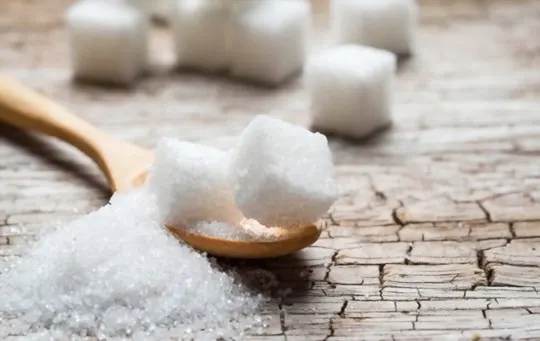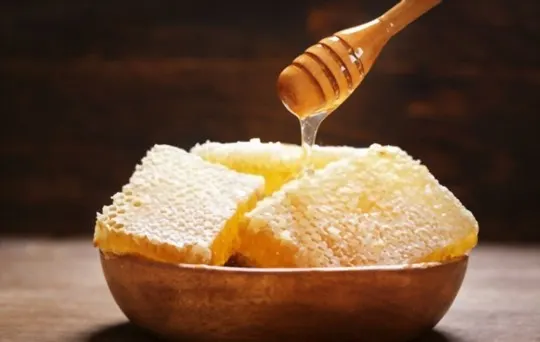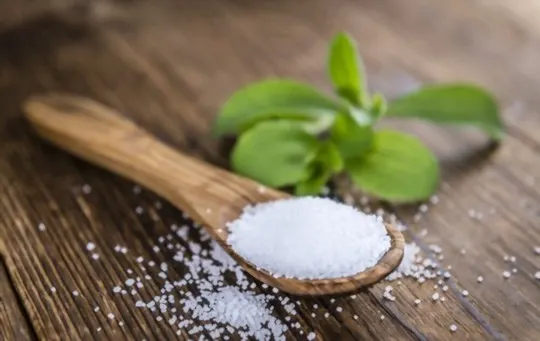Got a sweet tooth but white sugar’s gone AWOL from your pantry? No sweat, folks!
We’ve all been there, ready to bake something delicious and – bam – a key ingredient is missing. It’s like your baking mojo hits a snag.
Yet, here we are, about to save the day with some slick sugar swaps that’ll keep your treats on track.
Substituting white sugar isn’t just about keeping the sweetness alive; it’s also a chance to add unique flavors and maybe even a health kick to your baked goods.
You might even find these alternatives steal the spotlight in your recipes. Ready to turn this baking bump into a win?
Keep reading as we dish out our top 5 white sugar substitutes that could just make your next bake better than the rest.

The 5 Best Substitutes for White Sugar
If you are looking to cut sugar out of your diet but still want a sweet taste, there are many natural alternatives that can provide you with the same sweetness as white sugar.
Here are five of the best substitutes for white sugar:
1 – Brown Sugar

Brown sugar is a popular sweetener in baking, giving a unique taste and texture to the finished product.
Its deeper, molasses-like flavor creates a distinctly richer and more indulgent item than recipes made with white sugar.
To substitute brown sugar for white in recipes, use one cup of brown sugar for every cup of white called for.
Brown sugar has higher moisture content than white, so use one tablespoon less liquid in your recipe as well.
With its delicate balance of sweetness and depth, brown sugar makes desserts that are difficult to resist.
2 – Powdered Sugar

Powdered sugar, also known as confectioner’s sugar or icing sugar, is a convenient ingredient to have in any kitchen.
It has a delicate, not-too-sweet taste and an incredibly fine texture – so fine that it will melt instantly in your mouth and dissolve quickly when adding it to beverages.
Powdered sugar is popularly used as an ingredient in frosting and icings, but if you don’t have white sugar around, you can substitute powdered sugar instead.
Simply use 3/4 cup of sifted powdered sugar for each cup of granulated white sugar called for in the recipe.
Darken or deepen the flavor by using raw cane or brown sugar instead of the typical granulated variety.
3 – Raw Honey

Raw honey is one of the oldest natural sweeteners known to humankind, and it’s gaining popularity as a healthier alternative to traditional white sugar.
Boasting a more robust flavor than its processed counterpart, raw honey has a satisfyingly earthy sweetness and an almost syrupy texture.
It can be used in baking, smoothies, hot drinks, and even savory dishes for a subtle boost in flavor.
To substitute raw honey for white sugar in your recipes, just use half the amount of sugar that your recipe calls for and replace it with an equal quantity of raw honey – any added liquid will also need to be reduced by a quarter when using this substitution.
4 – Stevia

Stevia is a popular natural sweetener that has been around for centuries.
It has a unique, refreshingly sweet taste and syrup-like texture.
Not only does it provide sweetness without the calories of white sugar, but it can also be used as a one-to-one replacement for the same amount of white sugar in recipes.
This makes it very versatile compared to other natural sweeteners.
To get started with stevia, you can use granulated blends for sprinkling on food, liquid drops to add sweetness by the drop, or even ground-up stevia leaves to experiment with in drinks and cooking.
5 – Maple Syrup

Maple syrup is a familiar sweetness made from tapping maple trees and boiling the sap until it thickens into a deliciously rich, golden syrup.
It has a distinct and unique flavor that is subtly sweet with a hint of caramel, perfect all on its own or as an ingredient in countless recipes.
While its texture can vary from thin and light to dark and dense, it’s often used as a substitute for white sugar in baking and sauces, thanks to the added depth of flavor it offers.
You can use it with equal parameters to white sugar in most baking recipes and always enjoy something special.

Leave a comment